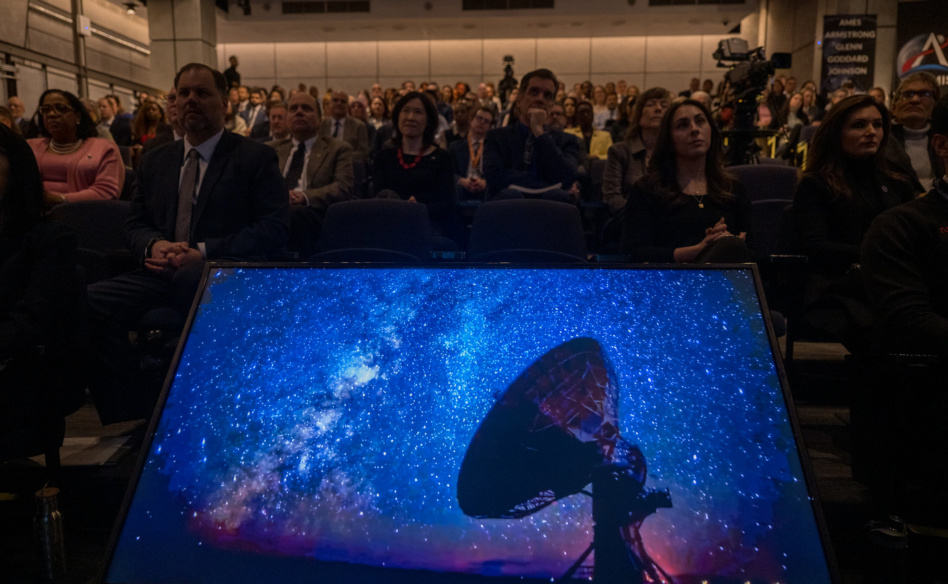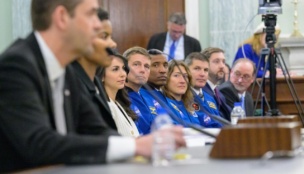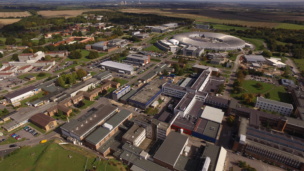You can tell NASA chief Bill Nelson was still smarting from last week’s appropriations package that cut NASA spending 2% compared to what it received in 2023. Rolling out his budget for fiscal 2025, Nelson didn’t mince words.
“Partisan, political gridlock got in the way and it put on the bargaining table a potential default of the full faith and credit of the United States government,” Nelson said, in full-on I-used-to-be-a-Senator-myself mode. Insisting that his agency remains nonpartisan, he blasted a “small group in the House of Representatives”—read, the House Freedom Caucus—for teeing up a capped budget process that cut spending on US technological supremacy.
The Biden administration’s NASA request for 2025 aims to match 2023 funding. That means the agency is asking for $2.7B less than it anticipated needing in 2024, according to last year’s request. Between inflation and the likelihood that Congress pares down the funding, it’s looking like another tight year for the space agency and its contractors.
“The arbitrary spending caps placed by Congress on this process have made advancing NASA’s ambitious slate of missions in the coming decade nearly impossible,” the Planetary Society’s Casey Dreier tells Payload. “As it stands NASA’s buying power continues to shrink and critical missions lay dormant.”
The biggest loser: NASA science spending, which would absorb some $230M in cuts. That means:
- Multi-year delays for the DAVINCI mission to Venus.
- Cancellation of the planned Geospace Dynamics Constellation, a sun science mission.
- Pushing back proposals for new low-cost science missions to FY 2026.
- Cuts to the Chandra X-Ray Telescope that put it on the path to end its mission.
And with Mars Sample Return plans still under evaluation, the agency warns spending there is TBD. Somebody should start a caucus for this, huh?
Top of mind: The Artemis lunar return remains the biggest ticket item on NASA’s budget, just ahead of the agency’s science missions. Even as questions are being asked about the cost of SLS and the potential delay of a human landing to 2028, look for pressure from Beijing to keep lawmakers sending cash to the Moon.
BTW: There’s still no launch date for the first elements of the poor Lunar Gateway, which was NET Oct. 2025 but is still being assessed.
Commercial space gets results: The agency reported savings thanks to Blue Origin’s lower-than-expected bid for its Human Landing System vehicle—money NASA is using to keep other elements of the lunar return on track. The agency was also able to absorb $39M million in cuts thanks to a cheaper-than-expected SpaceX rocket to launch the Sentinel 6-B satellite.
ISS Afterlife: There’s $109M for the mission to safely deorbit the ISS by 2030; NASA is expected to tap a contractor for the job in Q2. And funding for companies developing commercial space stations to replace the US national lab is just $169.6M, after receiving $229M in last week’s appropriations bill for FY 2024.
OSAM-1’s afterlife: NASA revealed that the money it’s saving by killing OSAM-1 will go to other priorities, including nuclear propulsion demos, in-space cryogenic refueling, and a nuclear reactor for the surface of the Moon. (Cue Ignition’s music.) Plus, as we surmised, the agency says “surveys of industry members have revealed no dependence on OSAM-1 technologies nor technology gaps that OSAM-1 uniquely fills.”




